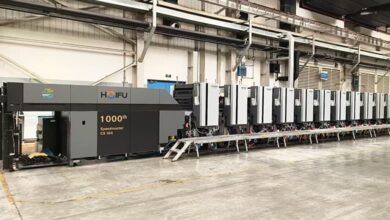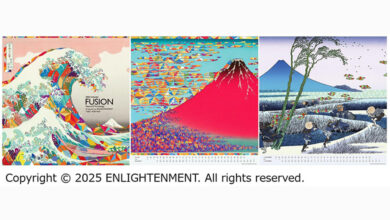Are You Set to Capture Continuous Growth?

By Sander Sondaal, Director, Commercial Print Sales, Ricoh Graphic Communications, Ricoh Europe
Change is constant – how do you manage change in a positive way? By finding and exploiting opportunities. Which leads me to highlight that continuous feed inkjet presses are responsible for producing growing volumes in the general commercial print, book, and direct mail sectors, driven by their increasing productivity and quality.
That is among the highlights Ralph Schlözer, WhatTheyThink European section editor, shared at the fourth annual Technology Outlook Week. Citing data from digital print technology research specialist I.T. Strategies, he explained book and direct mail volumes will continue to see steady growth in continuous feed inkjet production, while its overall percentage of commercial print volume is expected to double by 2028.
Each sector has its own defining influences:
- Books and publications
The fastest growing application for high speed inkjet is book printing according to IT Strategies. This is in stark contrast to predictions a few years ago about how e-readers would eat into the market share of physical books. COVID helped us fall back in love with the look, feel and comfort of a good book. Ralph also pointed to an increase in short run, on demand book production. He said self-publishers and commercial publishers are moving away from a focus on per unit cost. Publishers are giving consideration to full logistics around book ordering, processing, and warehousing which is driving greater investment in full end to end automation. A growing focus for them is on how production can be located close to need for sustainability purposes. And many are looking to link their ERP ordering systems to one of the global networks of print businesses that have been created to meet their needs for reliable, responsive delivery.
- Data driven print
This is seeing growth from a resurgence in direct mail. Influenced by the impact communication privacy laws are having on constraining social media advertising. As a result, direct mail is being given greater prominence in marketing alongside digital channels. It is increasingly clear that marketersre now focused on tailored campaigns and the ability to create highly personalised content as data management drives the engagement directly to the audience with the greatest impact. This represents a great opportunity for agile Print Service Providers with the right technology and data skills. For example, the ability of web fed presses to print at speed on glossy offset coated stocks or thicker substrates provides a wider choice of applications for greater impact.
- Commercial print
I.T. Strategies is finding that commercial printing, consisting of a broad range of applications ranging from business cards, flyers, and marketing collateral, to point of purchase posters, is increasingly discovering the benefit of high speed inkjet printing. This is in part due to the ability to print at the highest quality on coated paper. It also reports that the sector is converging with direct mail.
Industry consultancy Smithers’ The Future of Digital Printing to 2032 agreed that print is increasingly being personalised as part of mixed channel campaigns and that Big Data and improved analytics are providing more marketing insight into consumer preferences. It attributed this to latest technology developments.
These developments suit the evolving demands of print buyers because they meet the changing preferences of consumers better than the analogue alternatives. Technological enhancements, combined with the expertise of print providers, make inkjet competitive against offset, flexo, gravure, screen, and digital toner printing.
Improved capabilities that deliver:
- Flexibility and agility for great responsiveness to client requirements.
- The ability to print only what is needed on demand and with carriable content for enhanced efficiency.
- Latest technology for high performance quality and reliability.
- Responsible production with reduced waste and use of chemicals and materials. Printing on demand helps eliminate redundancy throughout the supply chain.
These and more are supported by Ricoh’s high speed inkjet portfolio that includes the new Ricoh Pro™ VC80000 high speed inkjet press. It introduces a number of groundbreaking technologies that assure high quality output at speeds up to 150mpm – a 50% increase on previous generation presses. They include faster start up times with new ‘firefly’ dryer technology, next level automated quality control with fully incorporated RICOH Pro Scanner and the elimination of manual image adjustment with a spectrophotometer for real time monitoring of colour reproduction. There is also highly automated quick paper setup, SmartStart automated machine setup, enhanced communication for inline finishing, plus maintenance and performance improvements.
To conclude, inkjet helps you stay relevant and offers you more opportunity. So, discover more about how to increase your share of book manufacturing, direct mail, or general commercial print volumes with high speed inkjet technology.





